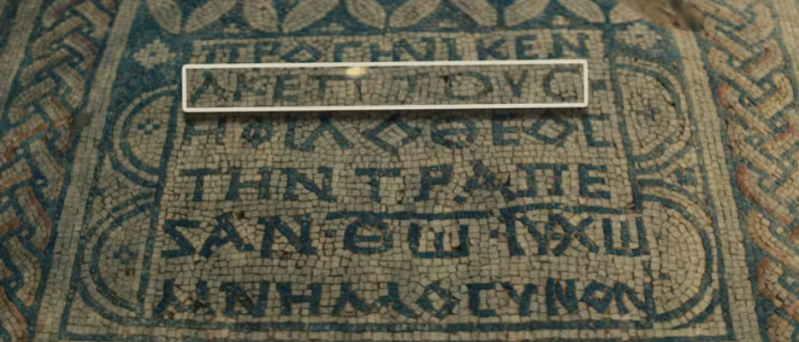
The Museum of the Bible in Washington D.C. (U.S.) is currently displaying the earliest known inscription identifying Jesus as God in the form of a mosaic found in ancient Megiddo, northern Israel, dubbed the “Megiddo Mosaic.”
On display from last September until July 6 next year, 2025, the mosaic “adds much to our understanding of early Christian communities in the Holy Land,” according to the Biblical Archaeology Society (BAS).
The 16ft (4.87m) by 32ft (9.75m) mosaic had been laid over the floor of a Christian worship hall.
It was found by Israel Antiquities Authority (IAA) archaeologists digging at Kfar Othnay between 2003 to 2005, the BAS outlined, a “Roman-and Byzantine-era settlement identified within the grounds of the modern Megiddo Prison.” They cleaned and conserved the artifact before it was transported to the museum.
“Astonishingly, this hall formed a wing of a large residential building used by Roman soldiers, namely the Sixth Ironclad Legion stationed at the nearby military camp of Legio,” stated the BAS. Dating from around 230 CE, the hall is the earliest monument in Israel dedicated to Christian worship.
Called “The Megiddo Mosaic: Foundations of Faith”, and in partnership with the IAA, the exhibition reveals Greek inscriptions in the mosaic alongside decorative motifs. Experts believe the inscriptions refer to believers in a local ancient church, including five women.
These inscriptions for the mosaic include “The god-loving Akeptous has offered the table to God Jesus Christ as a memorial.”
Museum experts believe this to be an early confirmation of Christ’s divinity, about a hundred years before the Council of Nicea.
“The inscription tells us Akeptous donated the table, the focus of the room. She may have been a woman with financial resources and social standing. She is called Philotheos, “God lover.” The table stood at the center of the room and was likely used in the celebration of the Eucharist, or Lord’s Supper,” reads the museum’s online description.
The other mosaic inscriptions are: “Gaianus, also called Porphyrius, centurion, our brother, has made the mosaic at his own expense as an act of generosity.” This Latin name, used colloquially as Porphyrius, hints the mosaic funder came from an eastern province and may have personally dedicated the mosaic.
Also, "Brutius has carried out the work.” This likely refers to a “tessellarius” (Mosaic floor maker) who did the work. These craftsmen in mosaics were considered highly skilled in the Roman Empire.
Finally, “Remember Primilla and Cyriaca and Dorothea, and lastly, Chreste,” showcase an example of the importance of women in the early church.
“The wording of this inscription is unusual in that, typically, the request is that God remember individuals,” notes the museum description. “Here, the community itself is called to remember these women. Nothing else is known of the women mentioned here. While they were clearly important to the community, the inscription does not tell us whether they were patrons of the community (like Akeptous), or martyrs, or honored for some other reason.”





